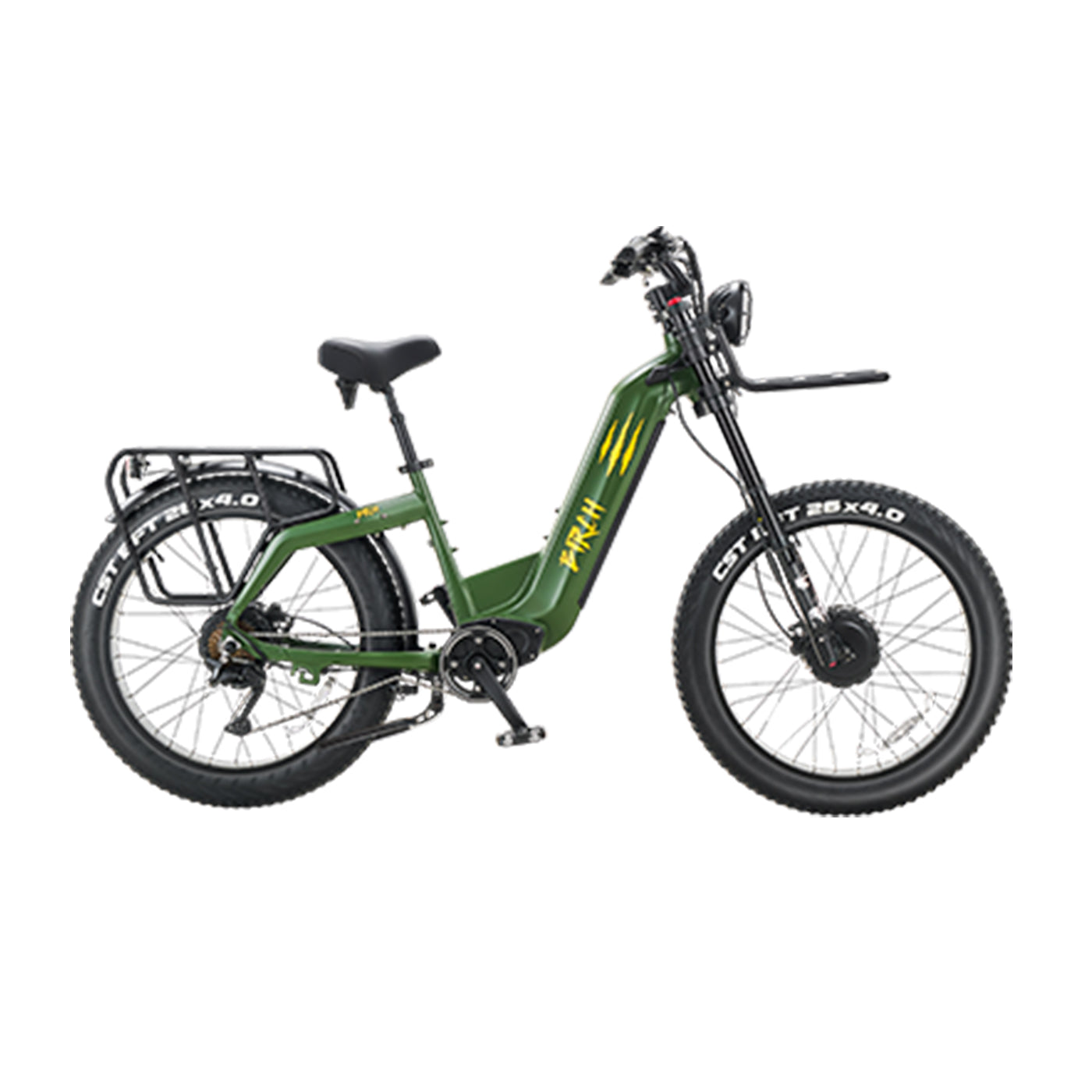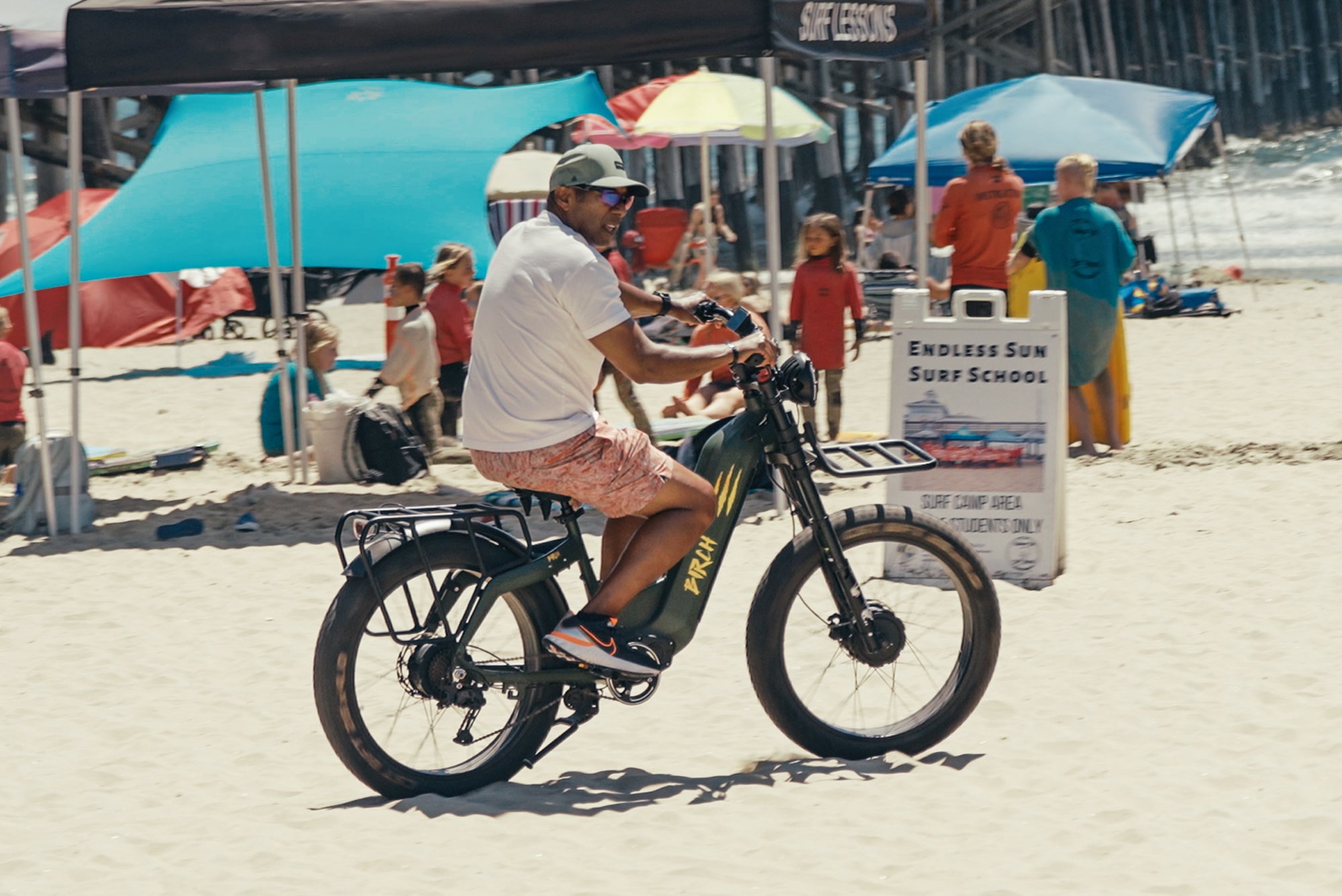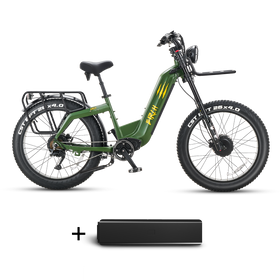Speed vs. Torque Sensor Ebike: What’s Better for Hunting Ebikes?
Speed vs. Torque Sensor Ebike: What’s Better for Hunting Ebikes?
In the world of electric bikes, pedal-assistance technology has truly revolutionized the way we ride. Ideal for riders with long commutes or fitness limitations, ebikes are generous and forgiving modes of transport that offer ample support to their users. At the core of this system are ebike pedal-assist sensors that detect how and when to provide support.
There are two main types of electric bike pedal-assist sensors: cadence (or speed) sensors and torque sensors. Ebike sensors work hand-in-hand with the pedal-assist feature, helping the e-bicycle gauge how much help the rider needs from the motor. Pretty much, ebike torque sensors and cadence sensors determine the smoothness, efficiency, and enjoyment of your ride.
What Is a Speed Sensor?
Ebike speed sensors, also known as cadence sensors, measure how fast the pedals turn. The motor assistance kicks in once pedal movement is detected, but it doesn’t consider the force that’s being applied. The result is more of an on/off type of assistance, which can be jarring and less intuitive for the rider.
On the other hand, speed sensors are more economical and easy to use, making them more popular for e-bikes. Users can control the speed sensor manually through the handlebar display. Once you set the pedal assistance to a certain level, the electric bike will help you maintain that speed while you’re pedaling. If you want to save your battery, shift your bike into a lower gear to exert less effort to pedal.
What Is a Torque Sensor?
Compared to speed sensors, ebikes with torque sensors offer a more seamless cycling experience. These sophisticated devices measure the force a rider applies to the pedals and adjust the motor assistance accordingly. The more pressure you apply, the more assistance the bike gives, and vice versa.
The torque sensor is an intuitive device that responds to your output, granting you precise power assistance that also uses less energy than ebikes with throttle. An ebike with a torque sensor offers a smooth, more natural ride that corresponds to the rider.
Imagine you’re going uphill. The electric bike torque sensor will kick in, offering you more pedal assistance because you’re putting in more effort. Once you start going downhill, the pedal assistance will lessen, making your ride continuous and stable. Torque sensors can boost your pedaling power anywhere from 50-300%!
Ebike Torque Sensor vs. Cadence Sensor
The main differences between torque sensor ebikes and speed sensor ebikes lie in their operation and the riding experience they provide.
Pros of Speed Sensors:
- Doesn’t require as much effort to power.
- More economic, so doesn’t drive up the price.
- Better for older riders that can’t pedal as much.
Cons of Speed Sensors:
- Utilizes more battery power than torque sensors.
- Jumpier than torque sensors; creates an inconsistent riding experience.
- Less adjustable and intuitive than torque sensors.
Pros of Torque Sensors:
- Offers a smoother, more exhilarating ride.
- Features consistent, accurate pedal assistance.
- Uses less battery so you can go further.
Cons of Torque Sensors:
- More expensive, making torque-sensing ebikes pricier.
- Require constant pedaling effort in order to use.
Why Torque Sensors Are Superior
Torque sensors lead in terms of efficiency as they conserve battery power by adjusting the motor's assistance to match the rider’s pedal force. This prolongs the battery's life and can, in certain models, even recharge it during use. What’s even better is that torque sensors provide more accuracy in assistance, enhancing control and responsiveness, which is particularly beneficial on all types of terrains.
Choosing a Torque Sensor for Hunting E-Bikes
When it comes to selecting a hunting e-bike, an electric bike with torque sensor features offer superior precision, efficiency, and natural ride feel. Especially when it comes to the outdoors, sudden adjustments in power can make a big difference, meaning that you’ll want a consistent, reliable beast.
Enter the Birch Grolar, the pinnacle of torque-sensor hunting e-bikes. Its torque sensor actively gauges pedal pressure, delivering swift and smooth acceleration just when you need it. This hunting electric bike is essential for hunters looking to maintain stealth and control of the landscape as they pursue their prey.
Highlights of the Birch Grolar
- Powerful Dual Motors: The Birch Grolar's dual 750W motors provide a combined 1500W of power and 160Nm of torque, ensuring formidable climbing capabilities and robust performance across all terrains.
- Robust Tires and Suspension: The Grolar is equipped with 26’’ x 4’’ puncture-proof fat tires and an advanced suspension system, offering unparalleled stability and ride comfort, crucial for the unpredictability of wilderness hunting.
- Ample Mileage: A high-capacity battery offers up to 85 miles of range on a single charge, ensuring that even the most remote hunting locations are within reach without the anxiety of a drained battery.
- Robust Payload: With a 400-lb payload, hunters can carry all necessary gear and attachments. They can even haul back their game without compromising performance.
Conclusion
For hunting enthusiasts or adventurers seeking out rugged and remote trails, choosing an e-bike equipped with a torque sensor is critical. The Birch Grolar epitomizes the benefits of this technology, presenting an unmatched combination of power, precision, and efficiency. With its robust frame, powerful dual motors, and intuitive torque sensor, the Grolar is ideally suited for those who demand the very best from their hunting e-bike. Embrace the wild with the confidence that only a Birch Grolar can offer. Explore further, hunt smarter, and conquer the outdoors with Birch.


















Leave a comment
All comments are moderated before being published.
This site is protected by hCaptcha and the hCaptcha Privacy Policy and Terms of Service apply.